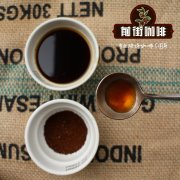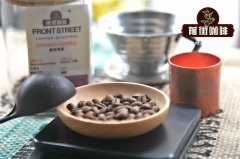What are the flavor and taste characteristics of Ugandan coffee beans? grinding water temperature parameters of Ugandan coffee beans

Professional coffee knowledge exchange more coffee bean information please follow the coffee workshop (Wechat official account cafe_style)
Introduction to the taste characteristics of Qianjie coffee-Ugandan coffee
Uganda, a landlocked country at the source of the Nile, has a history of producing coffee as long as other East African countries, but the quality of coffee has not been improved because of the war caused by ethnic antagonism. it was not until 15 years ago after the end of the war that Uganda's coffee industry developed rapidly.
If Ethiopia is the birthplace of Arabica coffee, then Uganda is the hometown of Luodou. During the colonial era, with the encouragement of the British, Uganda began to widely cultivate low-altitude species of Robusta. Today, Uganda has become the second largest exporter of Robusta in the world. Eighty-five percent of the coffee grown in Uganda is robusta coffee.
Although it is a coffee-growing country dominated by Robusta, Uganda also produces high-quality Arabica coffee, and its Akabica cultivation history can be traced back to a hundred years ago. Today, most of the country's Arabica is grown in the southeast of Mount Elgon, 4321 meters above sea level, and some on the border between Uganda and Kenya. Coffee, bananas, peanuts and other plants grow in the mode of mixed agriculture, and tall fruit trees become shade trees for coffee, thus ensuring the yield of coffee.
Coffee in Uganda is divided into Robusta and Arabica, of which Robusta coffee is grown in low-altitude areas of central, eastern, western and southeastern Uganda, up to 1200 meters above sea level. Arabica coffee is grown in the highlands of the slopes of Mount Mount Elgon in the east and Mt in the southwest. Rwenzori and Mt. Muhabura (altitude 1500-2300 m).
Coffee farmers in Uganda
Ugandan coffee is mellow and full-bodied, with charming fruit aromas and obvious layers of flavor. Arabica coffee in Uganda is dominated by traditional varieties such as Kent, Itsuka and SL-14,SL-28, while Robusta has two varieties: & # 39; Nganda Nganda' and & # 39; Erecta & # 39;
The local coffee processing methods in Uganda are divided into Drugar and wugar, and the grading system is relatively primitive. Coffee beans are classified as AA,A,B,C,PB (round beans) and E (elephant beans).
END
Important Notice :
前街咖啡 FrontStreet Coffee has moved to new addredd:
FrontStreet Coffee Address: 315,Donghua East Road,GuangZhou
Tel:020 38364473
- Prev

What is the difference between Kenya aa and Kenya ab? introduction to Kenya aa hierarchy
Professional coffee knowledge exchange more coffee bean information please follow the coffee workshop (Wechat official account cafe_style) Front Street Coffee-Kenya Coffee Grade introduction Kenya coffee beans have a strict grading system, according to the size of coffee beans taken out by washing plants
- Next

The origin of Kenyan coffee beans introduces how to drink Kenyan coffee powder and share it.
Professional coffee knowledge exchange more coffee bean information please follow the coffee workshop (Wechat official account cafe_style) Qianjie Coffee-Kenyan coffee producing area, hand brewing and sharing favorite individual coffee, full of confidence in coffee producing countries like Kenya, not only Kenyan coffee is rich in flavor: strong aroma and obvious acidity, especially Kenyan coffee has been harvested.
Related
- Beginners will see the "Coffee pull flower" guide!
- What is the difference between ice blog purified milk and ordinary milk coffee?
- Why is the Philippines the largest producer of crops in Liberia?
- For coffee extraction, should the fine powder be retained?
- How does extracted espresso fill pressed powder? How much strength does it take to press the powder?
- How to make jasmine cold extract coffee? Is the jasmine + latte good?
- Will this little toy really make the coffee taste better? How does Lily Drip affect coffee extraction?
- Will the action of slapping the filter cup also affect coffee extraction?
- What's the difference between powder-to-water ratio and powder-to-liquid ratio?
- What is the Ethiopian local species? What does it have to do with Heirloom native species?

